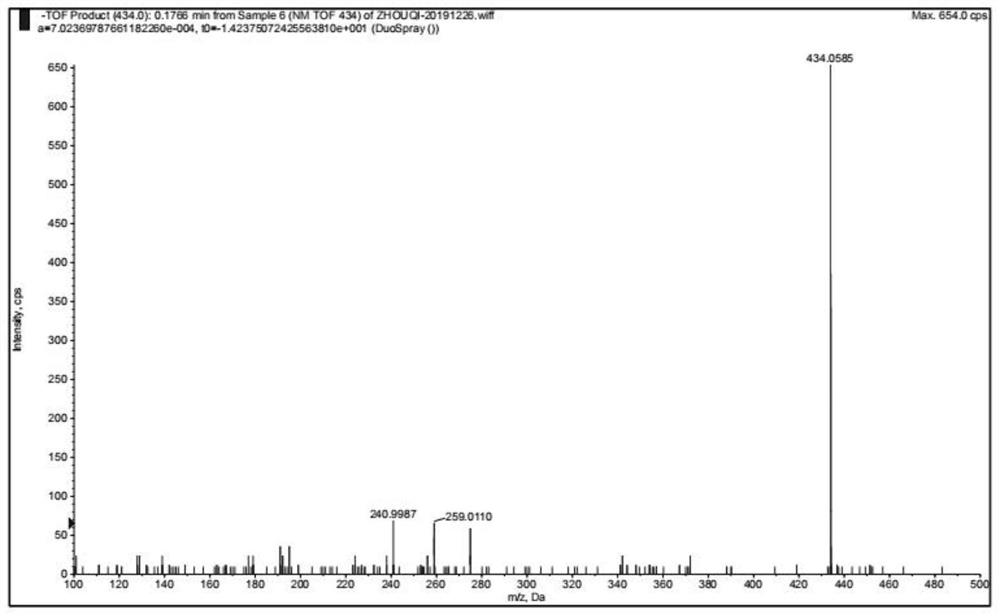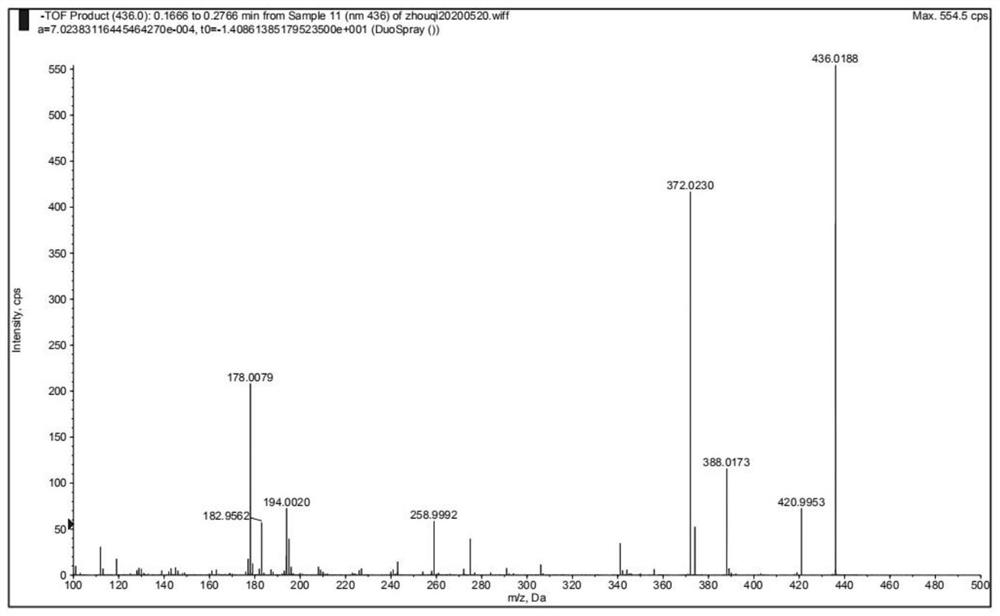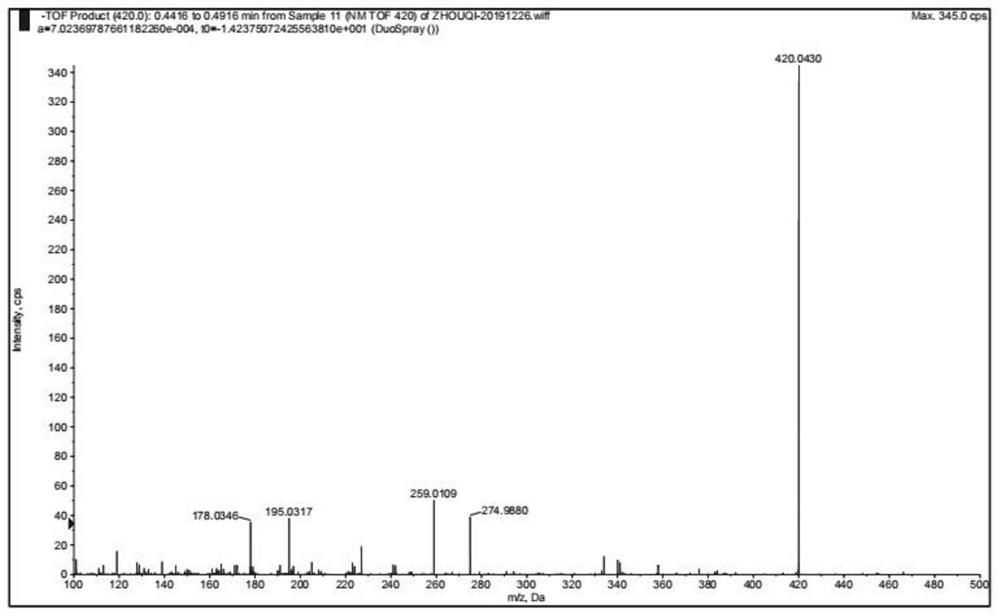Extraction and detection method of rapeseed glucosinolate
A technology of glucosinolate and detection method, which is applied in the field of extraction and detection of rapeseed glucosinolate, can solve the problems of lack, inaccurate qualitative analysis of rapeseed glucosinolate, and inability to identify unknown peaks, and achieves high-efficiency analysis. Methods, Effects of Avoiding Enzymatic Degradation
- Summary
- Abstract
- Description
- Claims
- Application Information
AI Technical Summary
Problems solved by technology
Method used
Image
Examples
Embodiment 1
[0048] A method for extracting and detecting rapeseed glucosinolates, specifically comprising the following steps:
[0049] Step 1. Pretreatment of raw materials: the Brassica napus sample was washed with distilled water, dried, and immediately frozen at -80° C. for 24 hours to inhibit the activity of myrosinase. Before extraction, the sample was ground into a fine powder using a laboratory grinder and passed through a 40-mesh sieve. Rapeseed powder samples were collected and transferred to polypropylene test tubes for storage.
[0050] Step II, extraction of glucosinolates: Weigh 0.4g of rapeseed powder sample into a 10mL centrifuge tube, add 5mL of 70% aqueous methanol solution, and heat the mixture in a water bath at 75°C for 40 minutes. Centrifuge at 8000rmp for 20min, collect the supernatant, and dilute to 5mL to obtain the rapeseed extract.
[0051] Step III, purification of glucosinolates: install the C18 microcolumn device, rinse the C18 microcolumn with 5mL methanol...
Embodiment 2
[0054] A method for extracting and detecting rapeseed glucosinolates, specifically comprising the following steps:
[0055] Step 1. Pretreatment of raw materials: the cabbage-type rapeseed sample was washed with distilled water, dried, and immediately kept frozen at -80° C. for 36 hours to inhibit the activity of myrosinase. Before extraction, the sample was ground into a fine powder using a laboratory grinder and passed through a 40-mesh sieve. Rapeseed powder samples were collected and transferred to polypropylene test tubes for storage.
[0056] Step II, extraction of glucosinolates: Weigh 0.4 g of rapeseed powder sample into a 10 mL centrifuge tube, add 5 mL of 70% aqueous methanol, and heat the mixture in a water bath at 75° C. for 30 minutes. Centrifuge at 8000rmp for 20min, collect the supernatant, and dilute to 5mL to obtain the rapeseed extract.
[0057] Step III, purification of glucosinolates: install the C18 microcolumn device, rinse the C18 microcolumn with 5mL ...
Embodiment 3
[0060] A method for extracting and detecting rapeseed glucosinolates, specifically comprising the following steps:
[0061] Step I, pretreatment of raw materials: the mustard type rapeseed sample was washed with distilled water, dried, and immediately frozen at -80° C. for 48 hours to inhibit the activity of myrosinase. Before extraction, the sample was ground into a fine powder using a laboratory grinder and passed through a 40-mesh sieve. Rapeseed powder samples were collected and transferred to polypropylene test tubes for storage.
[0062] Step II, extraction of glucosinolates: Weigh 0.4g of rapeseed powder sample into a 10mL centrifuge tube, add 5mL of 70% methanol aqueous solution, and ultrasonicate the mixture at 40°C for 20min. Centrifuge at 8000rmp for 20min, collect the supernatant, and dilute to 5mL to obtain the rapeseed extract.
[0063] Step III, purification of glucosinolates: install the C18 microcolumn device, rinse the C18 microcolumn with 5mL methanol, dra...
PUM
 Login to View More
Login to View More Abstract
Description
Claims
Application Information
 Login to View More
Login to View More - R&D
- Intellectual Property
- Life Sciences
- Materials
- Tech Scout
- Unparalleled Data Quality
- Higher Quality Content
- 60% Fewer Hallucinations
Browse by: Latest US Patents, China's latest patents, Technical Efficacy Thesaurus, Application Domain, Technology Topic, Popular Technical Reports.
© 2025 PatSnap. All rights reserved.Legal|Privacy policy|Modern Slavery Act Transparency Statement|Sitemap|About US| Contact US: help@patsnap.com



